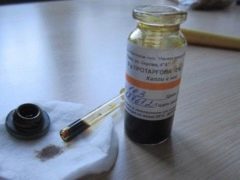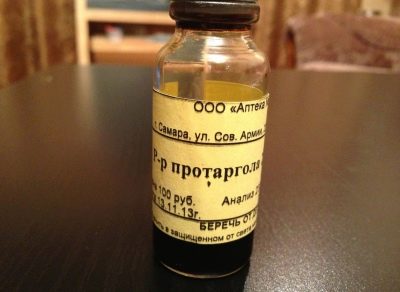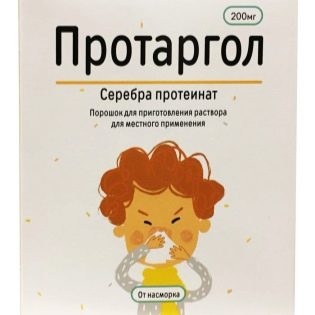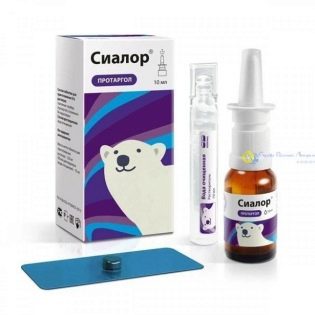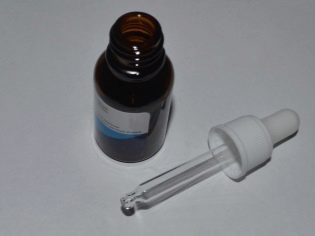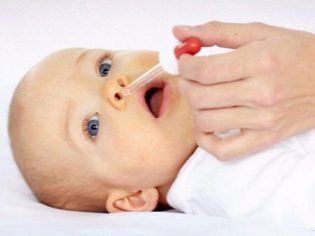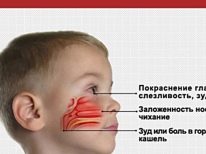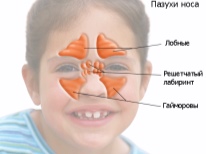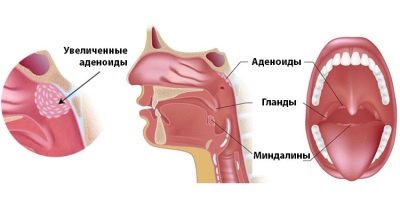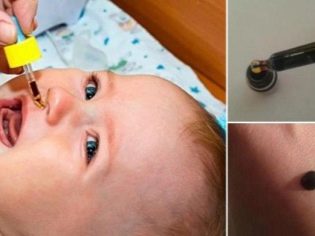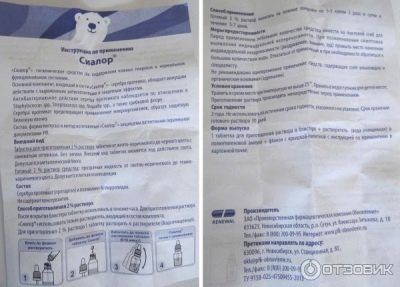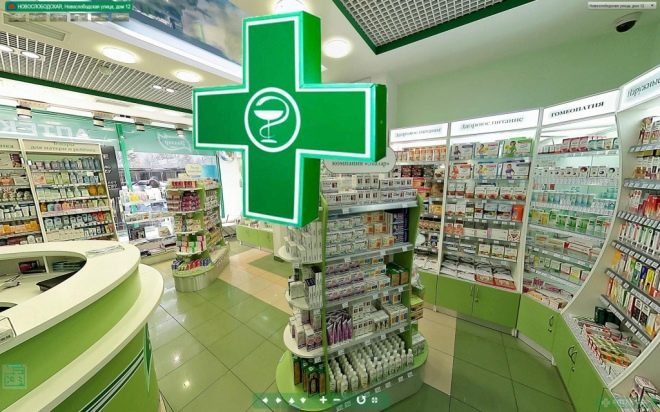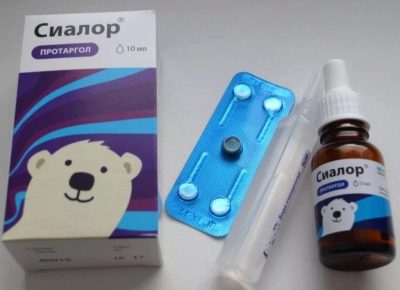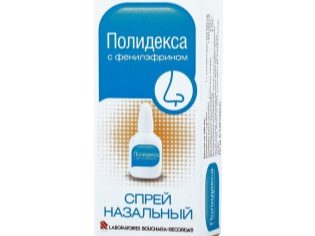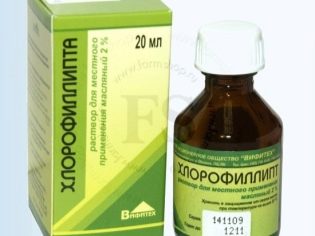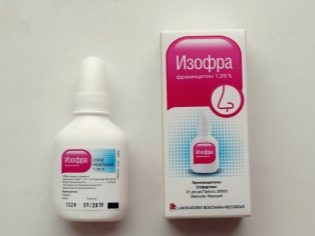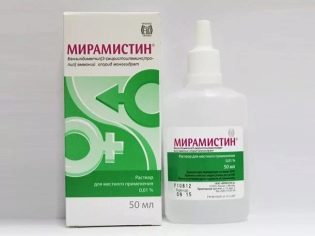Protargol for children: instructions for use
Babies are less resistant to attacks of bacteria and viruses that provoke colds and infections of the nose, ears, or throat. In such diseases, nasal congestion, runny nose, cough, sore throat and other unpleasant symptoms often occur.
One of the tools that help get rid of the inflammatory process in the nasopharynx is Protargol. Such medicine has been in demand for many years in adult patients and in the treatment of young children.
Special features
In pharmacies, "Protargol" can be represented as a powder or tablet, and before using a medication from such forms, you need to prepare the treatment solution at home yourself. For dilution of the drug in the package there is an ampoule with 10 ml of solvent. The powder is sold inside a glass vial and is hygroscopic light brown. On top of the bottle there is a dropper cap or there is a pipette in its cap.
If the drug is a solid form, the package contains a blister with one tablet, a solvent in an ampoule and an empty bottle equipped with a pipette cap. The tablet itself is round and flat, and its color is uneven, dark brown, almost black, with a blue tint.
The active substance of the drug is a silver compound with protein molecules called silver proteinate or colloidal silver. Its amount in one tablet or in one portion of the powder is 200 mg, and the silver content in the active compound "Protargola" corresponds to 8%. The powder form of the drug does not contain other substances, and the tablet may contain a binding component, for example, povidone. Solvent in all forms of medication is water for injection.
Often in the pharmacy can be purchased and already prepared aqueous solution. It is sold in glass bottles with a cork, and on the paper label it is necessary to mark the date when the expiration date of the drops ends. Such a solution, like a homemade medicine made from powder or tablets, has a brown color and a bitter taste, and there is no smell.
Operating principle
The compound of silver, which is the basis of Protargol, has antiseptic and disinfectant properties. They are due to the ability of silver ions released from proteinate to act on the bacteria that are present on the mucous membrane. Connecting with the DNA of microbes, silver inhibits the process of their reproduction, helping the body to cope with pathogens faster.
A sensitivity analysis showed that "Protargol" affects a large number of different microorganisms, among which are streptococci, moraxella, staphylococcus and other bacteria that cause inflammation in the ears, nose or throat. The solution is also harmful for fungi, including candid. At the same time, silver ions act on pathogenic microorganisms more actively than non-pathogenic ones, therefore dysbacteriosis does not occur after the application of Protargol.
A drug has a pronounced anti-inflammatory effect. It is associated with the ability of silver to precipitate proteins on the surface of the mucous membrane, with the result that a protective film appears.Due to its formation, the sensitivity of the damaged membranes is reduced, and the vessels narrow, causing the inflammatory reactions to slow down and the disease does not spread to neighboring areas.
Indications
Most often, "Protargol" is prescribed for various diseases of ENT organs.
The drug is used in children with:
- rhinitis;
- sinusitis;
- nasopharyngitis;
- sinusitis;
- purulent otitis;
- pharyngitis.
The tool can burrow into the eyes when blepharitis or conjunctivitis. In addition, Protargol is prescribed by urologists and gynecologists for inflammatory processes in the urinary organs, for example, for urethritis or vaginitis.
Is it prescribed for adenoids?
Many otolaryngologists write “Protargol” when adenoiditis is detected in a small patient, when the nasal mucosa is inflamed, and the crumb constantly complains of congestion and discharge. Such an inflammatory process in the adenoids is dangerous due to complications, due to which breathing is disturbed, oxygen deficiency occurs, and hearing deteriorates.
The use of "Protargol" helps to dry the mucous membrane and reduce the inflammation of the tonsils, so that sometimes it is even possible to avoid removal of growths by surgery.
How old is allowed?
Protargol has no age restrictions, but use this tool in the treatment of young patients (especially in newborns and babies up to a year) is permissible only on prescription. The prophylactic use of Protargol should also be coordinated with a pediatrician, otolaryngologist, or other specialist.
Contraindications and side effects
The use of "Protargol" is strictly prohibited in case of hypersensitivity to this drug. You can identify a drug allergy with a simple test - drop one drop on the baby's hand and see the reaction after 15 minutes.. If there is no redness, rash or other changes in the treated area, the product can be further dripped into the nose.
As already noted, the solution can cause a hives or other allergic reaction. Sometimes after applying "Protargol" there is a slight irritation at the treatment site, due to which the drug can cause itching or a burning sensation.
If these or any other unpleasant symptoms appear, you should consult your doctor.
Instructions for use
If the cause of the use of Protargol is one of the otorhinolaryngological diseases (runny nose, pharyngitis, sinusitis, and so on), the tool drips into each nasal passage twice a day. A single dosage should be clarified with a doctor, as well as the percentage of the solution used, since in childhood not 1% medicine is often used, but 1% solution, dripping it in an amount from 1 to 5 drops.
When used in the nose is worth considering the following nuances.
- Before using Protargol, it is recommended to rinse the spout with saline solution (ordinary saline solution and any preparation based on seawater are suitable for this procedure), and then clean the passages with cotton flagella or aspirator.
- Putting the child on his back and shaking the bottle with a solution, it is pipetted and injected into each nostril in the amount in which the doctor prescribed.
- If the nasal treatment is prescribed to the infant, “Protargol” can not be dripped into the nose, but applied to the mucous membrane with the help of cotton wool soaked in medicine.
- It is most convenient to bury the medicine in the nose in the morning after sleep, when other hygiene procedures are carried out, and the second time - in the evening, when the pussy is getting ready for bed.
If "Protargol" discharged in case of eye disease, then 2% solution is most often used. Depending on the pathology, the doctor prescribes 2-3 drops to each eye, and the frequency of use can be 2 to 4 times a day. When otitis media should be dripped into the ear three times a day, 2-5 drops.
When urological infections use two percent "Protargol". Means washed bladder or urethra, that is, such treatment is carried out only in a medical institution.
The duration of treatment with Protargol is determined individually, because it is influenced by the diagnosis and the reaction of the child’s body. Although addiction to the drug does not happen, but for a long time it is not used, so as not to provoke the accumulation of silver in the tissues.
Most often, doctors prescribe to take Protargol for five to seven days. Less commonly, it is permissible to use the product for up to two weeks.
Overdose
Too much of a dose of droplets or accidental ingestion of them in large quantities is a danger to the health of the child and can cause poisoning.
If an overdose is detected, call a physician immediately.
Terms of sale and storage
To purchase "Protargola" in a pharmacy, a prescription is not needed. The price of the medicine depends on the form, city and manufacturer. It usually ranges from 80 to 180 rubles per pack.
Proper storage of the drug directly affects its effectiveness. After preparation of the solution from a tablet or powder, its shelf life is 30 days. One month after mixing dry or solid colloidal silver with Protargol water, it should be discarded. If the product is not stored in liquid form, then its shelf life is 2 or 3 years.
Drops should be at home in a cool place (at a temperature of +2 to +8 degrees), where they will not be affected by the sun's rays. For the storage of Protargol, the top shelf of the refrigerator is best, as the solution will not reach the children.
If during storage the drug became heterogeneous or a silver luster appeared on the vial, it is better to refuse further use of such “Protargola”, replacing the drug with a fresh solution.
Reviews
About "Protargol" can be found mainly positive reviews, in which parents confirm the effectiveness of this solution for rhinitis, sinusitis and other diseases of the nasopharynx. Advantages of drugs include its good tolerability., the possibility of use even in infants and low price, so cheaper analogues are rarely sought.
Among the minuses of "Protargol" some mothers note a short shelf life after opening the package and the absence in many pharmacies, others - an unpleasant taste and staining of the mucous membrane. There are also negative reviews in which drops are called ineffective or harmfulwhen the drug did not help or caused adverse reactions.
Analogs
One of the preparations of the “Sialor” line can become a full replacement for “Protargol”. This is a drug called Sialor Protargol, which is represented by one tablet containing silver proteinate, as well as an ampoule of solvent, which is sterile water. In the package of such a means there is also an empty bottle in which a tablet is dissolved to obtain a 2% solution.
The lid of this bottle comes with a built-in pipette, which the drug is dripped into the child’s nose or with a spray device, which allows using the product as a spray. Since the active substance in such “Sialor” is the same as in “Protargol”, the scope of application of these drugs is the same, and the dosages also coincide. "Sialor Protargol" is highly in demand for prolonged rhinitis, adenoids, purulent otitis or sinus. It, as well as "Protargol", can be used also for the prevention of the defeat of ENT organs by bacteria or viruses.
Among other drugs, which, although differing from Protargol in their composition and mechanism of action, are used for the same indications, it is possible to mention such means.
- «Miramistin». This antiseptic is prescribed to children of any age for external treatment, as well as dripping into the nose and eyes in order to destroy infectious agents and to speed recovery. The drug is represented by a clear solution that foams after shaking.
- "Chlorophyllipt". This antiseptic contains active substances from eucalyptus, therefore it is in demand in the treatment of babies. It can be used from birth, but only as prescribed by a physician and after testing for sensitivity (the drug may provoke allergies). In diseases of the nasopharynx using a 2 percent solution in oil.
- «Isofra». This medicine is released as a spray and is often prescribed for bacterial cold or sinusitis, because its active ingredient is represented by topical antibiotic framycetin. The drug is approved for the treatment of children from 1 year.
- "Polydex with phenylephrine". This spray acts on the bacteria that caused the infection of the upper respiratory tract due to neomycin and polymyxin. Dexamethasone present in it helps to quickly eliminate inflammation, and phenylephrine narrows the nasopharyngeal vessels. The drug is used in young patients older than 2.5 years.
Any of these drugs, like Protargol, should be prescribed to the child by the doctor. According to pediatricians and Dr. Komarovsky, for a positive effect, it is important to determine the cause of the disease, and self-treatment for green snot or nasal congestion is dangerous in childhood.
Dr. Komarovsky will tell about nose drops in the next video.
